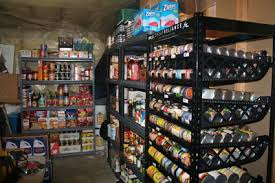The two kinds of food storage programs – “Ronco” and “Store what you eat”
- by The Lord Humungus
- 10 years ago
- 0 comments

Storing food is part of any comprehensive preparation plan, even if your time horizon is short. Even those preparing for only a few weeks will still need to store some nutrition, and certainly anybody who wants to be self-sufficient for many months if going to have to have a lot of food available to sustain them for that time period.
This means that anybody who wants to be prepared is going to have to implement some type of food storage program.
There are two main methods of food storage, the “Store what you eat” method and what I call the “Ronco” method, or “Set it and forget it”. You can of course use a hybrid food storage program that mixes elements of both strategies, but mostly one philosophy or the other will win out as they are mutually exclusive in some ways.
“Eat what you store, Store what you eat” Method
This is the method of simply buying and storing extras of all the stuff that you eat normally, and eating the oldest stuff first to cycle through your stockpiles. As with anything, there are several advantages and disadvantages to this method:
PROS:
– Cheaper
– No Waste
– You don’t have to alter your diet if SHTF
– You can dip into your food storage in much more minor increments if necessary
CONS:
– Must normally eat foods with longer shelf life ( canned, dry goods, etc)
– More space is required
– Requires more work and management to inventory and rotate food properly
“Ronco” Method
This is the “set it and forget it” method, named after the slogan for the Ronco brand Rotisserie oven. It involves using long-term storage foods purchased once and then left alone for as long as possible, unless they are needed. You just buy it, stash it away, and move on with your life (or, ‘set it and forget it’). This method is ideal for people who aren’t really into prepping, but do recognize the utility of ‘food insurance’ and just want to be prepared with as little work, fuss, or adjustment to their current lifestyle as possible.
PROS:
– Least work required
– Less space required
– Can eat whatever foods you want on a normal day-to-day basis
CONS:
– Costs a lot more
– There can be some waste if SHTF never happens
– Requires Drastically altering your diet if SHTF does happen and you have to break into your food supply
For a more detailed breakdown of the pros and cons of these two food storage programs, check out the Rule the Wasteland Podcast – episode 7:

